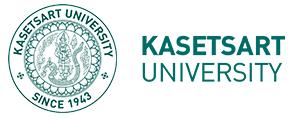[2.11] Please provide total carbon footprint (CO2 emission in the last 12 months, in metric tons)
Example of Carbon Footprint
table 2.11-1 Calculation of carbon footprint

(Kasetsart University Forests)
Kasetsart University Forests plays an important role in the production of research. student Internship and academic services to the society as well as providing the ecosystem service for students, staff and visitors, as the source of greenhouse gases, water sources, conservation of plants and animals, etc. For the economy and society, it is the food banks, and the hiring place of local workers for distributing of the ecotourism to the community.

Kasetsart University Forest plays an important role as a recreation area and a source of carbon dioxide. Kasetsart University Forest at Chalermphrakiat Sakon Nakhon Province Campus is a community food bank for people to collect forest products.
- Kasetsart University Bangkhen Campus with total area of forest 22.37 rai, absorbs carbon dioxide of 21.25 tons per year.
1) Varunawan Park, 6 rai, absorbs 5.7 tons of carbon dioxide per year.
2) Thai Commemorative Garden, 4.6 rai, absorbs carbon dioxide absorbed 4.37 tons per year.
3) 100 years garden of Luang Suwan Vajokkasikij, 5.25 rai, absorbs carbon dioxide 4.99 tons per year
4) 60-year garden, 6.52 rai, absorbs 6.19 tons of carbon dioxide per year.
.
- Kasetsart University Kamphaeng Saen Campus
His Majesty the King’s 80th Birthday Anniversary Park, the area of 131 rai absorbs 124.45 tons of carbon dioxide per year.
- Kasetsart University Chalermphrakiat Sakon Nakhon Province Campus
H.M. Queen Sirikit’s 86th Birthday Anniversary Natural Park and Dipterocarp Forest with the area of 931 rai including of variety of species of the plants such as dipterocarp forest, Shorea siamensis Miq., Shorea obtuse Wall., Terminalia alata Heyne ex Roth., Buchanania latifolia Roxb., Aporusa avillosa Baill., Xylia xylocarpa (Roxb.) Taub. , absorbs 884.45 tons of carbon dioxide per year.
- Kasetsart University Sriracha Campus
Khao Nam Sap, 340 rai of a dry evergreen forest with notable species include โมกมัน Wrightia tomentosa Roem., Lagerstroemia floribunda Jack., Nephelium hypoleucum Kurz, absorbs 323 tons of carbon dioxide per year.
The Office of the President, the Office of the University Library and VGREEN, Faculty of Environment received “Carbon Neutral Man” and “Carbon Neutral” awards from Thailand Greenhouse Gas Management Organization (Public Organization) under the Ministry of Natural Resources and Environment Control


Figure 2.11-1 The Office of the University Library, KU was the very first carbon neutral library of Thailand.


Figure 2.11-2 Carbon footprint corner at the Office of the university library
KU Econ Green Campus
Kasetsart University is the first certified Thai university by Thailand Greenhouse Gas Management Organization (Public Organization), under the Thailand Voluntary Emission Reduction Program in forestry and green area category.


Thailand Greenhouse Gas Management Organization (Public Organization) organized an event on “Hundreds of Hearts to Reduce Global Warming” on 19 September 2018 at Vibhavadee Ballroom, Centara grand at Central Plaza Ladprao Bangkok. In this regards, H.E. General Surasak Kanchanarat, Minister of Natural Resources and Environment of Thailand presented a Plaque to Assoc. Prof. Dr. Trin Saengsuwan, Vice President for Kamphaeng Saen Campus for his achievement on KU Eco Green Campus project.
The project is registered as one of Thailand Voluntary Emission Reduction Program or T-VER. Owing to Kamphaeng Saen Campus separated area of 235.77 rai within the campus into 3 zones for difference purposes as follows: Zone 1 – 100 rai of forest area Zone 2 – forest area Zone 3 –Yangna tree ( Dipterocarpus alatus Roxb.) planting area


What is T-VER?
Thailand Voluntary Emission Reduction Program or T-VER was developed by Thailand Greenhouse Gas Management Organization (Public Organization) or TGO. The purpose is to promote and support all sectors to engage in greenhouse gas reduction voluntarily in order that the carbon credits obtained from the program can be trade. Credits obtained from the program are mainly used for CSR purposes and voluntary carbon offsets of organization and companies in Thailand. The TGO has defined rules and methodology to register and certify for the program that must be contributes to reducing / absorbing greenhouse gases in Thailand.


